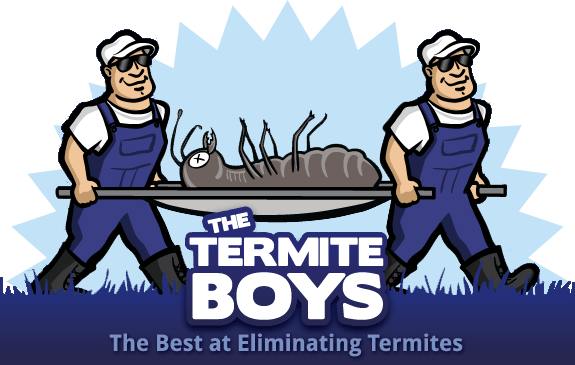Termites cause billions of dollars in property damage annually in the U.S., and Massachusetts homeowners are not exempt from their potential infestations. These silent destroyers can wreak havoc on homes and structures, often going undetected until the damage is extensive. But did you know that not all termites are the same? Understanding the most common termite species in Massachusetts, their behaviors, and how to identify them can be crucial in protecting your property.
This guide will help you recognize Massachusetts’ most common termite species and what you can do to safeguard your home.
What Are Termites?
Termites are small insects notorious for their ability to feed on cellulose-based materials such as wood, paper, and plant matter. These pests thrive in colonies that can grow to thousands or even millions of members. Termites are not just household nuisances; they’re essential to ecosystems, breaking down dead wood and recycling nutrients into the soil. However, their natural role becomes a problem when it extends to your home.
There are over 2,000 species of termites globally, but only a handful are common in Massachusetts. These include subterranean termites and drywood termites. Knowing how these species operate can help you in early detection and prevention.
Why Are Termites a Concern in Massachusetts?
Massachusetts’ climate oscillates between cold winters and humid summers, providing an inviting habitat for termites, particularly subterranean species. Moisture levels are critical for termites, and the damp conditions prevalent in this region often support their underground colonies. With homes in Massachusetts often relying on wooden structures, the combination of moisture and cellulose materials creates a perfect storm for termite infestations.
The Most Common Termite Species in Massachusetts
1. Subterranean Termites (Reticulitermes flavipes)
Description and Behavior
Subterranean termites are the most common termite species in the U.S. and are especially prevalent in Massachusetts. These termites build extensive colonies underground and create mud tubes to travel from their nests to food sources. Their primary diet consists of wood, but they are also known to chew through other materials like drywall and insulation in search of cellulose.
Key Characteristics
- Size: Workers are about 1/8 inch long, while reproductive termites can grow up to 1/2 inch.
- Color: Workers are creamy white, while soldiers have tan bodies with large brown heads.
- Recognizable by mud tubes they create on walls, foundations, and around wooden areas.
Signs of Infestation
- Hollow-sounding wood when tapped.
- Mud tubes along the building’s foundation.
- Swarms of winged termites (alates) near windows, doors, or well-lit areas, especially in spring.
Potential Damage
Subterranean termites are responsible for most of the termite-related property damage in the U.S. They can cause severe structural problems if left unchecked.
2. Drywood Termites (Cryptotermes spp.)
Description and Behavior
While less common than subterranean termites, drywood termites can still be found in Massachusetts. Unlike their subterranean counterparts, drywood termites do not require contact with the soil. They live directly in the wood they infest, making them particularly challenging to detect.
Key Characteristics
- Size: Workers and soldiers are about 3/8 inch long, while reproductive termites can grow up to 1/2 inch.
- Color: Light brown bodies with darker colored wings.
- Do not build mud tubes, as they do not need soil/moisture routes.
Signs of Infestation
- Presence of frass (termite droppings) near wooden structures.
- Tiny pinholes in wooden surfaces where termites have burrowed.
- Winged termites swarming, typically in warmer months.
Potential Damage
Drywood termites can infest structural wood, furniture, and even flooring. They are slower to cause damage compared to subterranean species but are still a major concern.
3. Formosan Subterranean Termites (Coptotermes formosanus)
Description and Behavior
Formosan termites are a more aggressive subterranean species capable of creating significantly larger colonies than native subterranean termites. They are not as commonly found in Massachusetts as in warmer southern climates, but they have started to spread northward due to environmental and transportation factors.
Key Characteristics
- Size: Slightly larger than native subterranean termites.
- Color: Yellow-brown bodies.
- Known for their extreme aggressiveness and ability to consume wood at rapid rates.
Signs of Infestation
- Damage appearing faster than typical subterranean termites.
- Large, well-established mud nests.
- Swarming during the warmer seasons.
Potential Damage
Because of their large colonies, Formosan termites can devastate a structure in a shorter period of time, making early detection even more critical.
How to Prevent Termite Infestations
Prevention is the best strategy against termites. Use these tips to protect your home from the most common termite species in Massachusetts:
Reduce Moisture Around Your Home
- Fix leaky pipes, faucets, and roofing.
- Ensure proper drainage around your home’s foundation.
- Use a dehumidifier in humid indoor spaces like basements.
Remove Wood-to-Soil Contact
- Avoid wood-to-ground contact for fences, decks, and siding.
- Store firewood and other cellulose materials well away from your home’s foundation.
Inspect and Maintain Your Home
- Regularly check for mud tubes, damaged wood, or frass.
- Repair cracks in your foundation that could provide entry points for termites.
- Hire a professional for an annual termite inspection.
Consider Chemical Barriers or Treatments
- Use termiticides around your foundation to create a chemical barrier against termites.
- Explore bait systems designed to eradicate colonies.
What to Do If You Spot Termites
If you suspect termites in your home, it’s crucial to act quickly. Termites can cause significant damage over time, which can be expensive to repair. Contact a pest control professional to conduct an inspection and recommend treatment options. DIY methods can help as a temporary measure, but professional-grade products and expertise often yield more effective results.
Protect Your Home from Termites Today
Termites may be small, but their potential for damage is massive. By understanding the most common termite species in Massachusetts, you can take proactive steps to prevent infestations and protect your home. Whether dealing with native subterranean termites or the occasional drywood species, vigilance and preventive measures are key.
A termite-free home is a stress-free home. If you’re unsure where to start, consider consulting a local pest control expert for advice tailored to your specific needs.

